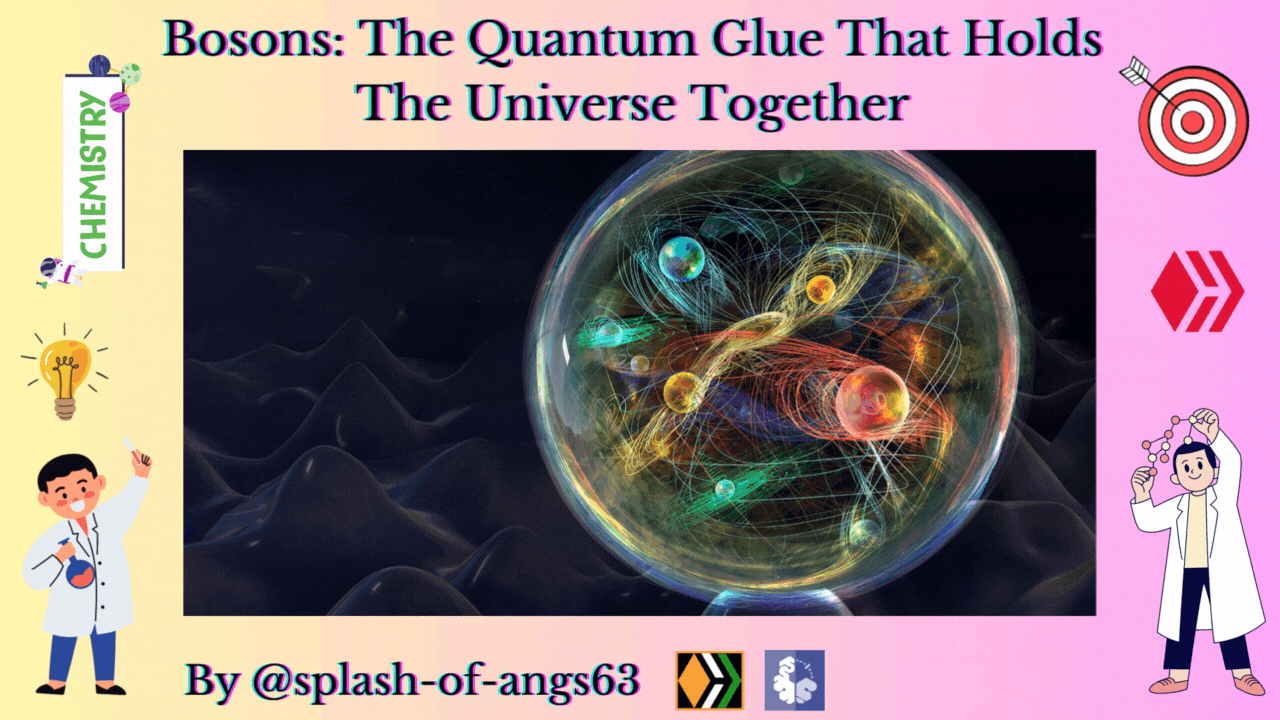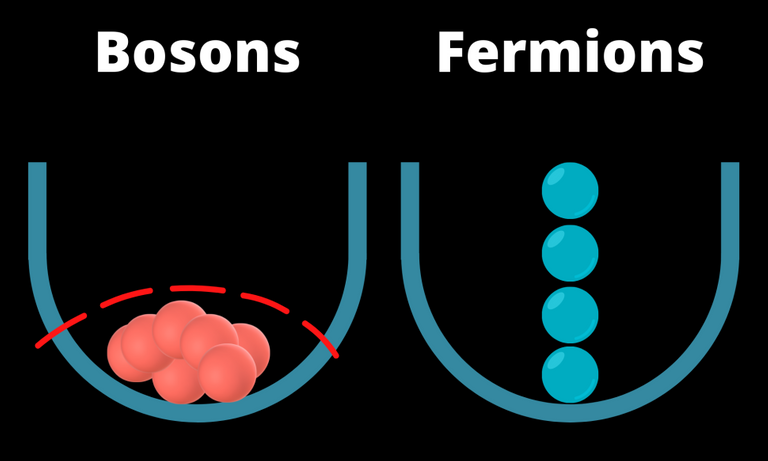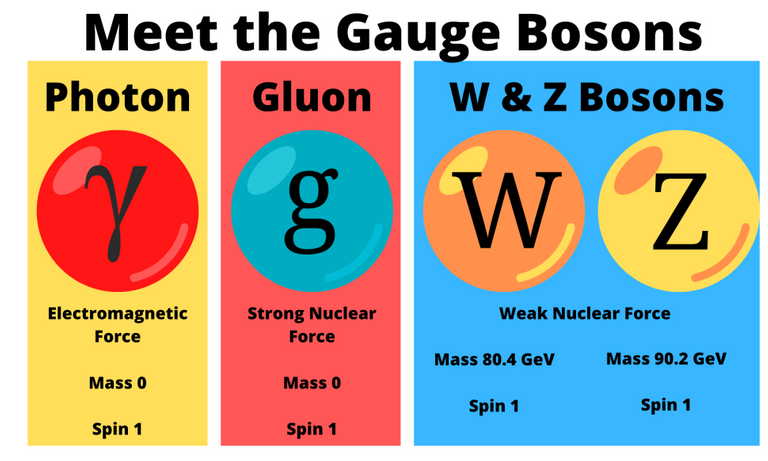Bosons: The Quantum Glue That Holds The Universe Together |ChemFam #55|
Greetings to everyone! Do you know that there is only one scientist whose name is associated with both the tiniest pieces of existence and the largest events in the universe. He is the Indian physicist Satyendra Nath Bose, a pioneer who pierced mysteries of the universe. All sub-atomic particles can be divided into two fundamental classes, namely Fermions and Bosons. Fermions are the particles that make up ordinary matter, whereas Bosons are the force carriers which give rise to forces between particles. To put these two terms through an example, the laptop you may be now reading this article on is made up of fermions and the fact that this device has a weight or you will hear a clonk when you accidentally drop it on the floor is due to Bosons. On the other hand, the gigantic explosion when a star dies i.e., the Supernova. Lights emitting from a supernova can be equivalent to an entire galaxy. A type of supernova is called as Bosenova, which is associated with the same Sir SN Bose.


Albert Einstein was impressed with Bose's work so much that he collaborated with him in an entire new field of quantum physics, which he called ''Bose-Einstein statistics'' and not ''Einstein-Bose''! He himself acknowledged that Bose contributed more than he did. The sub-atomic particle boson was named after Nobel Laureate Paul Dirac and Fermions were named after Italian-American physicist and Nobel Laureate Enrico Fermi.
Bosons, the elusive quantum particles play an extraordinary role in shaping the very fabric of our universe. Often referred to as the "force carriers", bosons are key players in the fundamental forces that govern the behavior of matter and energy.
What Makes A Particle Boson?
One of the defining property of bosons relates to a quantum mechanical property called the spin, which can be thought of as a deflection when a particle experiences magnetic field impairing its angular momentum. A fermion is a particle with 1/2 spin that can have plus (+) or minus (-) values. This means that fermions can have values such as 1/2, -1/2, 3/2, and -3/2. The plus or minus determines the direction of intrinsic angular momentum a particle will take.
Bosons on the other hand have whole integer spins including zero. That means bosons can have spins 0, -1, +1, 2, -2 etc. In simple mathematics, adding two halves, make a whole integer, similarly, on combining even number of fermions creates a larger particle that is a boson. For example, 4He, atoms are bosons having 2 protons, 2 electrons and 2 neutrons. It is at this point, interesting to note that Bosons do not obey Pauli's exclusion principle and are free to occupy the same quantum number, unlike unsocial fermions.


Different Types of Bosons
Bosons can be divided into a few categories. But in order to illustrate the different properties that make up the wing of the ''particle zoo'', it is convenient to divide them into two crude groups - particles, we have experimental evidence and those that are just theoretical.

Discovered Bosons
Photons
Obviously, the best known gauge boson is the photon, which is the particle of light and the medium of the electromagnetic force.
For a photon — with spin of 1 (the spin is the quantum mechanical equivalent of polarization, or the direction in which the light wave is directed); this means that the direction of rotation of the photon can be the same or opposite. Photons were the first measured gauge bosons to be discovered, and in the 20th century, Max Planck and Albert Einstein proposed that light exists in packets of energy called "quanta". In 1928, the American chemist Gilbert Lewis named these quanta "photons".
Gluons
The second discovered gauge bosons, the gluon are bosons that carries the strong nuclear force. As such, they are responsible for "gluing" other things together.
In particular, gluons bind quarks together to form protons and neutrons. But gluons don't stop there: They also hold together composite particles (collectively called "nucleons") found in the nuclei of atoms at the heart of everyday matter. Gluons were discovered in 1979 at the electron-positron collider PETRA in DESY, Germany.

The W and Z Bosons
The W and Z bosons are gauge bosons that are stronger than gravity but responsible for carrying the weak nuclear force only over short distances. Spin 0 bosons are responsible for nuclear decay, in which one element changes into another by helping protons turn into neutrons, and vice versa.
The biggest problem with W and Z bosons, discovered in 1983, was figuring out how they had mass, as theory at the time suggested that they must be as weak as photons.
Higgs Bosons
The Higgs boson was first included in the Standard Model of particle physics to explain how the W and Z bosons gain mass, but it was soon followed by their biggest role as Higgs' advisor. The Higgs boson was discovered in 2012 in high-energy proton-proton collisions at the Large Hadron Collider (LHC), the world's most powerful particle accelerator. The discovery of the
Higgs boson with a frequency of 0 is said to complete the Standard Model, but there are also physical consequences to be found outside the standard. Exploring physics beyond the Standard Model means there are other theoretical bosons to discover.


Theoretical Bosons
Gravitron
One thing that the standard model of particle physics cannot explain is gravity. This is because quantum mechanics—subatomic physics—doesn't quite match up with general relativity or Einstein's theory of gravity.
Other fundamental forces have a particular gauge bosons carrying them (weak even if there are two), so why not gravity? Gravity's parameter boson - the "graviton" - has been theorized but has not been demonstrated experimentally until now.
Since gravity is negligible at the subatomic level, the absence of gravitons and the absence of a "quantum theory of gravity" do not affect the model much.
The Social Bosons
Due to the Pauli's exclusion principle, fermions with half-integer spin cannot have the same quantum numbers. This means that fermions cannot be grouped together. However, integer bosons do not obey the Pauli's exclusion principle. This means that they can be tightly packed and give rise to some unique features or physical properties.
The most common example of a "social boson" is a laser that contains photons of the same wavelength and frequency, all traveling in the same direction.

Force Carriers Associated With Bosons
We know the four fundamental forces of nature, i.ee. the electromagnetic force, strong nuclear force, weak nuclear force and gravitational force. Bosons are associated with these four fundamental forces that govern the behavior of matter and energy. Let's delve deeper into the fundamental forces associated with bosons as force carriers -
Electromagnetic Force (Mediated by Photons):
The electromagnetic force is perhaps the most familiar force in our everyday lives. It is responsible for interactions between charged particles, such as electrons and protons. The force is transmitted by particles known as photons as discussed already. This force is responsible for phenomena like light propagation, electricity, magnetism and even the interactions between atoms in chemical reactions.

Strong Nuclear Force (Mediated by Gluons):
The strong nuclear force is what holds the nucleus of an atom together. It is responsible for binding protons and neutrons within the nucleus despite the electric repulsion between positively charged protons. This force is incredibly powerful but acts only over very short distances, within the size of an atomic nucleus. The strong nuclear force is mediated by particles gluons, which "glue" quarks (the building blocks of protons and neutrons) together. Unlike photons, gluons carry a "color" charge, which is a property related to the strong force's behavior.
Weak Nuclear Force (Mediated by W and Z Bosons):
The weak nuclear force is responsible for processes like beta decay whereby a neutron transforms into a proton while emitting an electron (beta particle) and an antineutrino. The weak force is crucial for the process by which the sun produces energy through nuclear fusion. Unlike the other forces, the weak force has a relatively short range and is mediated by three particles: the W+ (positively charged) boson, the W- (negatively charged) boson, and the Z0 (neutral) boson.
Gravitational Force (Hypothetically Mediated by Gravitons):
The gravitational force is responsible for the attraction between masses. While bosons mediate the other three forces, the particle associated with the gravitational force is called the graviton (though its existence has yet to be confirmed). Unlike the other forces, gravity is extremely weak compared to the other fundamental forces and has an infinite range. This is why gravity dominates on large cosmic scales, shaping the movements of planets, stars, galaxies, and the entire universe.

Conclusive thoughts
Bosons are the unsung heroes of the quantum realm, serving as the messengers of forces that shape the cosmos. From the photon's dance of light to the mysterious graviton's potential role in gravity, these particles hold the keys to unlocking some of the universe's most profound secrets. As scientists continue to probe deeper into the nature of bosons, we inch closer to unraveling the tapestry of reality and understanding the intricate web that binds us all.
Until we meet again :)
Fermions, Bosons by Hyperphysics (2022).
The Standard Model by CERN (2022).
Meet a superpartner at the LHC by APS Physics (2010)
Extraction of Lithium Using Electrode Materials of Lithium Ion Battery-II |ChemFam #54|
Extraction of Lithium Using Electrode Materials of Lithium Ion Battery |ChemFam #53|
Helium: The First Noble Gas |ChemFam #52|
Hydrogen: The Simplest Atom |ChemFam #51|
Elements, Atoms and Atomic Theory |ChemFam #50|
Have You Thanked A Clod Today? |ChemFam #49|
Nuclear Energy: Will It Rise Again? |ChemFam #48|
SCRAP Giveaway | Terracore | Draw #10 |
Soaps: An Essential and Effective Cleansing Agent |ChemFam #47|
SCRAP Giveaway | Terracore | Draw #5 |
Chemicals in Food : Debunking Myths and Ensuring Safe Consumptions |ChemFam #46|
Unveiling The Secrets of Antiseptics and Disinfectants |ChemFam #45|
What are Antimicrobials and Antimicrobial Drugs? |ChemFam #44|
Therapeutic Action of Different Classes of Drugs |ChemFam #43|
Introduction to Drugs and Drug-Target Interaction |ChemFam #42|
Scientists Analyze a Single Atom With X-Rays For The First Time |ChemFam #41|
Can We Slow Down Aging? |ChemFam #40|
Studying The Cluster Compounds: The LNCC |ChemFam #39|
PS The thumbnail image is being created by me using canva.com by using template image from ScienceNews


Thanks for your contribution to the STEMsocial community. Feel free to join us on discord to get to know the rest of us!
Please consider delegating to the @stemsocial account (85% of the curation rewards are returned).
Thanks for including @stemsocial as a beneficiary, which gives you stronger support.
!PIZZA
$PIZZA slices delivered:
@chrisheyne(1/15) tipped @splash-of-angs63